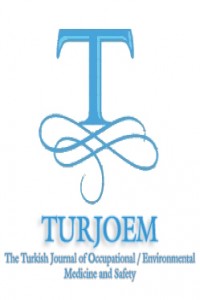Abstract
References
- Department of Toxicology, School of Pharmacy, Marmara University, Haydarpaşa-İstanbul, Turkey
- Department of Pathology Laboratory Technicianship, Vocational School of Health Related Services, Marmara University, Haydarpaşa-İstanbul, Turkey
- Department of Toxicology, School of Pharmacy, Medipol University, Kavacık-İstanbul, Turkey
Abstract
Acrylamide is a chemical that may occurs in
certain foods through Maillard reaction between amino acids and certain
reducing sugars during high-temperature cooking, such as fried foods and bakery
products. ACR is used in preparing polymers and copolymers containing polar
functional groups, manufacturing of cosmetics, glues and paper. ACR has the
potential to be neurotoxic, hepatotoxic, genotoxic effects and lead to lipid
peroxidation by decreasing oxidative defense system. Moreover, the
International Agency for Research on Cancer has classified acrylamide as
“probably carcinogenic to humans, 2A” in 1994. ACR can be metabolize to form
epoxide derivative glycidamide that can react with thiol and hydroxyl groups of
macromolecules such as proteins, DNA and lipids in living organism.
Reactive oxygen
species (ROS) mediated oxidative stress is related in some of diseases and it
is also induced by most of reactive chemicals. ROS are formed as a natural
byproduct of the normal metabolism of oxygen endogenously and can be produced by exogenous xenobiotics. ACR is also
known to increase ROS levels and cause to oxidative damages in the body. There
are number of protective antioxidants and antioxidant
enzymes for dealing with the reactive metabolites. The role of the
antioxidants in ACR mediated oxidative damages in living organism has a great
importance and studies on antioxidants are important for revealing the
protective effect on oxidative stress. The aim of this study is to show the
significance of the acrylamide toxicity and ameliorative
effects of antioxidants against oxidative organ injury due to ACR toxicity in
rats.
Keywords
ASSESSMENT OF THE PROTECTIVE EFFECTS OF ANTIOXIDANTS ON ACRYLAMIDE INDUCED TOXICITY IN RATS
References
- Department of Toxicology, School of Pharmacy, Marmara University, Haydarpaşa-İstanbul, Turkey
- Department of Pathology Laboratory Technicianship, Vocational School of Health Related Services, Marmara University, Haydarpaşa-İstanbul, Turkey
- Department of Toxicology, School of Pharmacy, Medipol University, Kavacık-İstanbul, Turkey
Details
| Journal Section | Articles |
|---|---|
| Authors | |
| Publication Date | February 16, 2017 |
| Published in Issue | Year 2017 Volume: Volume 2 Issue: İssue 1 (1) - 2.İnternational Congress Of Forensic Toxicology |


